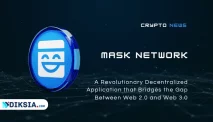How did Polygon come about?
Polygon was originally launched as Matic Network in October 2017 by Jaynti Kanani, Sandeep Nailwal and Anurag Arjun. The project was inspired by Plasma, a scaling proposal by Vitalik Buterin that suggested creating child chains on top of Ethereum to increase its capacity.
Matic Network focused on implementing Plasma-based sidechains that would offer faster and cheaper transactions for decentralized applications.
In April 2019, Matic Network conducted an initial exchange offering (IEO) on Binance Launchpad and raised $5 million by selling 19% of its total supply of MATIC tokens.
In June 2020, Matic Network launched its mainnet with its first set of validators who secured the network by staking MATIC tokens.
In February 2021, Matic Network rebranded itself as Polygon to reflect its expanded vision and scope. The project announced that it would not only offer Plasma-based sidechains but also other scaling solutions such as ZK rollups, optimistic rollups, and stand alone chains.
Polygon also revealed its ambition to create a multi-chain system that would connect different blockchain networks and enable interoperability and collaboration.
What is the development roadmap for Polygon?
Polygon has a comprehensive roadmap that outlines its short-term and long-term goals and milestones. Some of the highlights of Polygon’s roadmap are:
- Launching Polygon SDK, a software development kit that allows developers to create and deploy their own scaling solutions on Polygon.
- Launching Polygon zkEVM, a ZK rollup chain that offers full EVM compatibility and scalability for Ethereum applications.
- Launching Polygon Miden, a decentralized rollup chain that leverages execution proofs of concurrent, local transactions.
- Launching Polygon ID, a decentralized identity solution that enables users to own and control their digital identities across multiple blockchains.
- Launching Polygon Hermez, a ZK rollup chain that focuses on scaling payments and token transfers.
- Launching Polygon Zero, a ZK rollup chain that supports general-purpose smart contracts and zero-knowledge proofs.
- Launching Polygon Avail, a data availability solution that provides reliable and tamper-proof data feeds for layer 2 solutions and standalone chains.
- Launching Polygon Nightfall, a privacy-preserving solution that enables confidential transactions and smart contracts on Ethereum.
Who are the key people behind Polygon?
Polygon is led by a team of experienced and passionate blockchain developers, entrepreneurs, and community builders. Some of the key people behind Polygon are:
- Jaynti Kanani: Co-founder and CEO of Polygon. He is a full-stack developer and blockchain engineer who previously worked at Housing.com as a data scientist. He is also the co-author of the Plasma MVP specification.
- Sandeep Nailwal: Co-founder and COO of Polygon. He is a blockchain developer and entrepreneur who previously worked at Deloitte and Welspun Group. He is also the founder of ScopeWeaver, a platform for professional services in India.
- Anurag Arjun: Co-founder and CPO of Polygon. He is a business consultant and product manager who previously worked at IRIS Business Services and SNL Financial. He is also the co-founder of Daoventures, a DeFi robo-advisor platform.
- Mihailo Bjelic: Co-founder and core researcher of Polygon. He is a blockchain researcher and engineer who previously worked at Decenter, a blockchain research and development company. He is also the co-author of the Plasma Group specification.
Polygon Technology
What is the underlying technology of Polygon?
Polygon is based on the Ethereum network, which is the world’s largest blockchain platform for decentralized applications. Ethereum uses a proof-of-work consensus mechanism to secure its network and validate transactions. However, this mechanism has some drawbacks, such as low scalability, high gas fees, and environmental impact.






